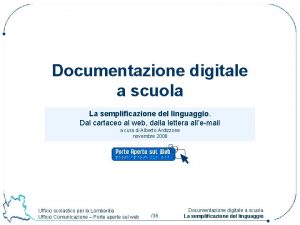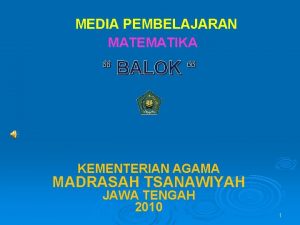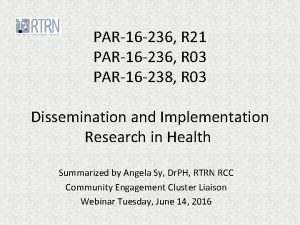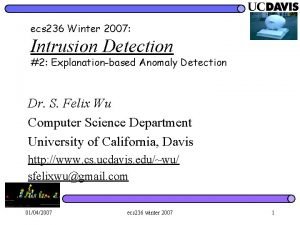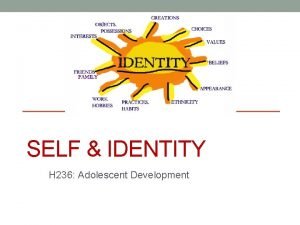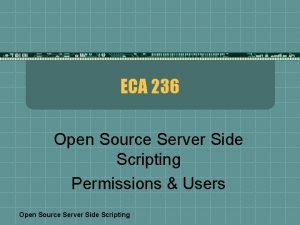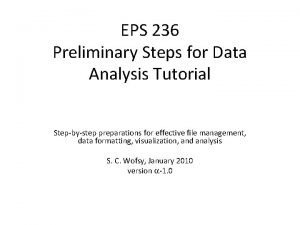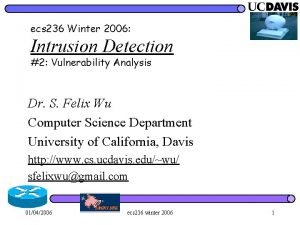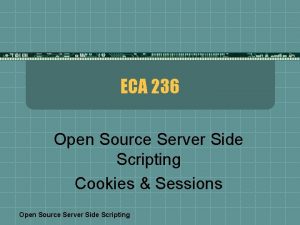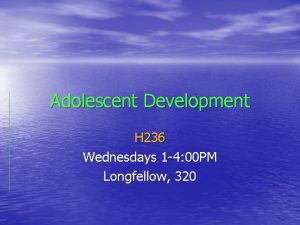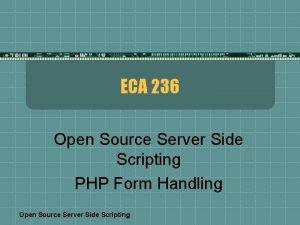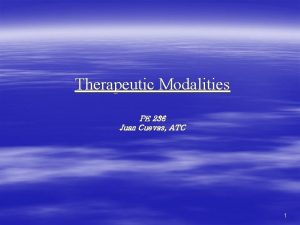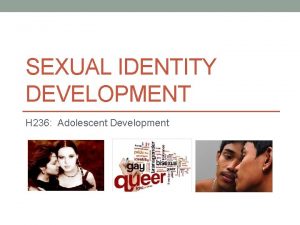PAR16 236 R 21 PAR16 236 R 03








































- Slides: 40

PAR-16 -236, R 21 PAR-16 -236, R 03 PAR-16 -238, R 03 Dissemination and Implementation Research in Health Summarized by Angela Sy, Dr. PH, RTRN RCC Community Engagement Cluster Liaison Webinar Tuesday, June 14, 2016

• http: //grants. nih. gov/grants/guide/pa-files/PAR-16 -236. html • http: //grants. nih. gov/grants/guide/pa-files/PAR-16 -237. html • http: //grants. nih. gov/grants/guide/pa-files/PAR-16 -238. html

Purpose • To identify, develop, evaluate and refine effective and efficient • methods, systems, infrastructures, and strategies to disseminate and implement • evidence-based health behavior change interventions, evidence-based prevention, early detection, diagnostic, treatment and management, and quality of life improvement services • into public health, clinical practice, and community settings

Award Information Budget: R 01 Funds Available The number of awards is contingent upon NIH appropriations and the submission of a sufficient number of meritorious applications. Budget Application budgets are not limited, but need to reflect the actual needs of the proposed project. Award Budget The total project period may not exceed 5 years

Award Information Budget: R 03 Funds Available The number of awards is contingent upon NIH appropriations and the submission of a sufficient number of meritorious applications. Budget Application budgets are limited to $50, 000 in direct costs per year. Award Budget The total project period may not exceed 2 years

Award Information Budget: R 21 Funds Available The number of awards is contingent upon NIH appropriations and the submission of a sufficient number of meritorious applications. Budget The combined budget for direct costs for the two-year project may not exceed $275, 000. No more than $200, 000 may be requested in any single year. Applicants may request direct costs in $25, 000 modules, up to the total direct costs limitations of $275, 000 for the combined, two-year project Award Budget The total project period may not exceed 2 years

Contacts Scientific Research and Financial/Grants Management – Institute Specific • National Cancer Institute (NCI) • National Heart, Lung, and Blood Institute (NHLBI) • National Human Genome Research Institute (NHGRI) • National Institute on Aging (NIA) • National Institute on Alcohol Abuse and Alcoholism (NIAAA) • National Institute of Allergy and Infectious Diseases (NIAID) Eunice Kennedy Shriver National Institute of Child Health and Human Development (NICHD) • National Institute on Deafness and Other Communication Disorders (NIDCD) • National Institute of Dental and Craniofacial Research (NIDCR) • National Institute on Drug Abuse (NIDA)

Contacts Scientific Research and Financial/Grants Management – Institute Specific • National Institute of Environmental Health Sciences (NIEHS) • National Institute of Mental Health (NIMH) • National Institute of Neurological Disorders and Stroke (NINDS) • National Institute of Nursing Research (NINR) • National Institute on Minority Health and Health Disparities (NIMHD) • National Center for Complementary and Integrative Health (NCCIH) • Division of Program Coordination, Planning and Strategic Initiatives, Office of Disease Prevention (ODP) • Office of Behavioral and Social Sciences Research (OBSSR)

Contacts Peer Review • Jessica D. Bellinger, Ph. D. Center for Scientific Review (CSR) Telephone: 301 -768 -2592. Email: jessica. bellinger@nih. gov

Key Dates Posted Date Opening Date Letter of Intent Due Date Application Due Date(s) Scientific Merit Review Date(s) Earliest Start Date(s) Expiration Date May 10, 2016 May 16, 2016 30 days prior to the application due date Standard dates apply May 8, 2019

Eligibility • Any individual(s) with the skills, knowledge, and resources necessary to carry out the proposed research as the Program Director(s)/Principal Investigator(s) (PD(s)/PI(s)) is invited to work with his/her organization to develop an application for support. Individuals from underrepresented racial and ethnic groups as well as individuals with disabilities are always encouraged to apply for NIH support • May propose multiple PDs/PIs

Background • Relatively little is spent on research to understand how best to ensure that the lessons learned from research are relevant to inform and improve the quality of health, delivery of services and the utilization and sustainability of evidence-based tools and approaches. • NIH has recognized that closing the gap between biomedical discovery and health care delivery is both a complex challenge and an absolute necessity if we are to ensure that all populations benefit from the Nation’s investments in scientific discoveries.

Background (continued) • For many years, health researchers may have assumed that tools and interventions deemed efficacious within clinical or community-based trials would be readily adopted and implemented. • Study of strategies to most effectively, equitably, and efficiently implement health policies and guidelines is encouraged, as are studies that evaluate policy and other contextual factors that influence the success of implementation or dissemination efforts.

Background (continued) • There continues to be great variation in how health information, interventions, and new clinical practices, guidelines and policies are transmitted and translated for public health and health care service use in specific settings • For the purpose of this FOA, a distinction is made between "dissemination research" and "implementation research", as follows

Background (continued) Dissemination research • Dissemination research is the scientific study of targeted distribution of information and intervention materials to a specific public health or clinical practice audience. • The intent is to understand how best to spread and sustain knowledge and the associated evidence-based interventions. • We are currently missing critical information about how, when, by whom, and under what circumstances evidence spreads throughout the agencies, organizations, front line workers and consumers of public health and clinical services. • Moving the field forward will require studies identifying mechanisms and approaches to package and convey the evidence necessary to improve public health, community and clinical care services in ways relevant to local settings.

Background (continued) Implementation research • Implementation research is the scientific study of the use of strategies to adopt and integrate evidence-based health interventions into clinical and community settings in order to improve patient outcomes and benefit population health. • Implementation research seeks to understand the behavior of healthcare professionals and support staff, healthcare organizations, healthcare consumers and family members, and policymakers in context as key influences on the adoption, implementation and sustainability of evidence -based interventions and guidelines. • This research announcement encourages studies to test models, theories and conceptual frameworks of the implementation process that move away from an exclusively "top-down" approach to a greater emphasis on the resources of local care settings and the needs of multiple stakeholders, including approaches such as team science, community based participatory research, action research and related frameworks that engage stakeholders and end users throughout the process.

Background (continued) Dissemination and Implementation (D&I) research • Studies typically involve both interdisciplinary cooperation and transdisciplinary collaboration, utilizing theories, empirical findings, and methods from a variety of fields not traditionally associated with health research. • D&I research will often include significant and ongoing collaboration with stakeholders from multiple public health and/or clinical practice settings as well as consumers of services and their families/social networks. • This FOA will support a variety of sound methodological approaches including (but not limited to) observational, experimental, quasiexperimental, and simulation modeling approaches that produce relevant evidence on outcomes, costs, and/or unanticipated consequences. • Data on mechanisms of action, moderators, and mediators of D&I strategies will greatly aid decision-making on which strategies work for which interventions, in which settings, and for which populations.

Objectives and Scope • This FOA invites research grant applications that will identify, develop, test, evaluate and/or refine strategies to disseminate and implement evidence-based practices (e. g. behavioral interventions; prevention, early detection, diagnostic, treatment and disease management interventions; quality improvement programs) into public health, clinical practice, and community settings. • In addition, studies to advance D&I research methods and measures are encouraged.

Objectives and Scope (continued) Examples of relevant research directions include but are not limited to: • Studies of strategies to implement health promotion, prevention, screening, early detection, and diagnostic interventions, as well as effective treatments, clinical procedures or guidelines into existing care systems. • Studies of the implementation of multiple evidence-based practices within community or clinical settings to meet the needs of complex patients and diverse systems of care. • Longitudinal and follow-up studies on the factors that contribute to the sustainability of evidence-based interventions in public health and clinical practice. • Studies testing the effectiveness and cost-effectiveness of dissemination or implementation strategies to reduce health disparities and improve quality of care among rural, minority, low literacy and numeracy, and other underserved populations.

Objectives and Scope (continued) Examples of relevant research directions include but are not limited to (continued): • Studies of the relationship of context and local capacity of clinical and community settings to adoption, implementation and sustainability of evidence-based practices. • Prospective or retrospective studies of the adoption, implementation and sustainability of health policies and their interaction with programs and contextual factors. • Studies of systems interventions to impact organizational structure, climate, culture, and processes to enable dissemination and implementation of clinical/public health information and effective clinical/public health interventions. • Studies that focus on the development and testing of theoretical and evaluation models for D&I processes.

Objectives and Scope (continued) Examples of relevant research directions include but are not limited to (continued): • Studies of the dissemination of varied strategies to promote effective patient and caregiver communication, leading to improved healthcare delivery and outcomes. • Studies of the dissemination and implementation of effective and cost-effective strategies for incorporating genomic medicine, sequence-based diagnostics and therapeutics in clinical care.

Objectives and Scope (continued) In order to take advantage of existing resources and knowledge in the field, investigators are encouraged to consider the relationship of the following key characteristics of D&I research to their applications, which may include but are not limited to: • Use and testing or refinement of conceptual models appropriate for D&I • Understanding of the complexity of health interventions, including those with multiple components and those for low resource settings and for populations traditionally underrepresented in research, for which D&I may not be a simple process • Incorporating the identification of mediators, moderators, and mechanisms of action, where applicable, that explain the impact of dissemination or implementation strategies • Consideration and characterization of the multi-level context and environment in which the proposed research will be conducted

Objectives and Scope (continued) In order to take advantage of existing resources and knowledge in the field, investigators are encouraged to consider the relationship of the following key characteristics of D&I research to their applications, which may include but are not limited to (continued): • Attention to issues of resources expended, programs costs, cost-effectiveness or other economic outcomes • Incorporation of stakeholder relevant outcomes of research (including relevant outcomes for patients, families, providers, administrators, policymakers).

Objectives and Scope (continued) Other: • Collaborative Research: Given the range of expertise that may be needed for conducting D&I research, applicants are encouraged to form transdisciplinary teams of scientists and practice stakeholders to work together to develop and/or test conceptual models of dissemination and implementation that may be applicable across diverse community and practice settings and patient populations, and design studies that will accurately and transparently assess the outcomes of dissemination and implementation efforts. • Information Relevant to Specific Institutes/Centers: Applicants are encouraged to contact the Scientific/Research Contact of the intended and selected Institutes and Centers on its scientific interests to ensure that the aims of the proposed project are consistent with I/C mission.

Required Components • • • SF 424(R&R) Cover SF 424(R&R) Project/Performance Site Locations SF 424(R&R) Other Project Information. SF 424(R&R) Senior/Key Person Profile R&R or Modular Budget R&R Subaward Budget PHS 398 Cover Page Supplement PHS 398 Research Plan All instructions in the SF 424 (R&R) Application Guide must be followed: Resource Sharing Plan, Appendix

Merit Review Criteria • Note – R 21 – The R 21 exploratory/developmental grant supports investigation of novel scientific ideas or new model systems, tools, or technologies that have the potential for significant impact on biomedical or biobehavioral research. – An R 21 grant application need not have extensive background material or preliminary information.

Merit Review Criteria • Note – R 03 – The R 03 small grant supports discrete, welldefined projects that realistically can be completed in two years and that require limited levels of funding. – Because the research project usually is limited, an R 03 grant application may not contain extensive detail or discussion.

Merit Review Criteria • Significance – Does the project address an important problem or a critical barrier to progress in the field? – If the aims of the project are achieved, how will scientific knowledge, technical capability, and/or clinical practice be improved? – How will successful completion of the aims change the concepts, methods, technologies, treatments, services, or preventative interventions that drive this field?

Merit Review Criteria • Significance – Specific to this FOA – What is the estimated public health benefit of the research? – Do the existing data, public health and patient needs justify D&I? – If the aims of the proposed project are achieved, how will D&I knowledge be advanced? – Will potential adopters and organizations be able to determine the applicability of the results to their setting?

Merit Review Criteria • Investigators – If Early Stage Investigators or New Investigators, or in the early stages of independent careers, do they have appropriate experience and training? – If established, have they demonstrated an ongoing record of accomplishments that have advanced their field(s)? – If the project is collaborative or multi-PD/PI, do the investigators have complementary and integrated expertise; are their leadership approach, governance and organizational structure appropriate for the project?

Merit Review Criteria • Investigators – Specific to this FOA – Are the investigators part of stakeholder teams or have strong links and engagement of stakeholders necessary to accomplish the project aims? – Is there clear evidence of D&I research expertise as part of the team?

Merit Review Criteria • Innovation – Does the application challenge and seek to shift current research or clinical practice paradigms by utilizing novel theoretical concepts, approaches or methodologies, instrumentation, or interventions? – Are the concepts, approaches or methodologies, instrumentation, or interventions novel to one field of research or novel in a broad sense? – Is a refinement, improvement, or new application of theoretical concepts, approaches or methodologies, instrumentation, or interventions proposed?

Merit Review Criteria • Innovation – Specific to this FOA – Does the proposed dissemination or implementation research contribute new and innovative design approaches to the study of dissemination or implementation processes and/or outcomes? – Do the methods proposed promise to speed the translation of research into practice and/or produce novel and robust findings?

Merit Review Criteria • Approach – Are the overall strategy, methodology, and analyses wellreasoned and appropriate to accomplish the specific aims of the project? – Are potential problems, alternative strategies, and benchmarks for success presented? – If the project is in the early stages of development, will the strategy establish feasibility and will particularly risky aspects be managed? – Have the investigators presented adequate plans to address relevant biological variables, such as sex, for studies in vertebrate animals or human subjects?

Merit Review Criteria • Approach – Specific to this FOA – Does the applicant demonstrate an understanding of D&I research principles? – Is the dissemination or implementation approach appropriate to the problem and population using research methods that are relevant, rigorous and practical? – Are the measures and analysis plan linked to the dissemination or implementation plan and study aims?

Merit Review Criteria • Approach – Specific to this FOA (continued) – How appropriate are the plans to sustain effective D&I approaches once the research-funding period has ended? – If the project involves human subjects and/or NIH-defined clinical research, are the plans to address 1) the protection of human subjects from research risks, and 2) inclusion (or exclusion) of individuals on the basis of sex/gender, race, and ethnicity, as well as the inclusion or exclusion of children, justified in terms of the scientific goals and research strategy proposed? – If clinical, community or public health settings are involved, are stakeholders sufficiently engaged in the process, including project design?

Merit Review Criteria • Environment – Will the scientific environment in which the work will be done contribute to the probability of success? – Are the institutional support, equipment and other physical resources available to the investigators adequate for the project proposed? – Will the project benefit from unique features of the scientific environment, subject populations, or collaborative arrangements?

Merit Review Criteria • Environment – Specific to this FOA – Are the investigators capable of taking the results of the proposed study to scale to achieve public health impact? – Is there evidence of institutional support to sustain dissemination or implementation interventions once the research funding ends?

Additional Review Criteria • • Protection of human subjects Inclusion of women, minorities, children Vertebrate animals Biohazards Resubmissions Renewals Revisions

QUESTIONS OR COMMENTS? Angela Sy sya@hawaii. edu
